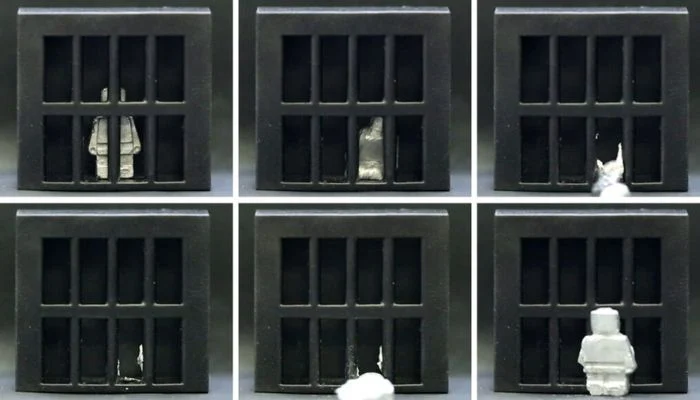Meet Real Life Version of Terminator: A Tiny Shape-Shifting Robot

Have you ever heard of a tiny robot that can melt and rebuild into its former shape? No Way! Such a shape-shifting robot has been developed by researchers which enables it to do jobs in confined locations or even escape from prison. The group has put its mobility and shape-shifting prowess to the test and has published the results in the journal Matter as well.
Shape-shifting robot: A Tiny Version Of the Terminator
Talking about a melting or shape-shifting robot may sound like something from a sci-fi film, however, the fact is that the team who made it really took inspiration from the sea cucumber, a marine critter. While talking to McKenzie Prillaman of Science News, the senior author and mechanical engineer Carmel Majidi of Carnegie Mellon University stated:
“sea cucumbers can very fast and reversibly modify their stiffness. The challenge for us as engineers is to mimic that in the soft materials systems.”
We all know that Traditional robots are quite stiff and heavy. Due to that, making them is difficult to maneuver in tight locations. On the other hand, soft robots are quite flexible, so, they are typically weaker and more difficult to manage. Keeping these all things in mind, the team thought to develop a material that can switch between the liquid and solid states and is both strong and flexible.
Reports claim that the researchers used a robot composed of gallium for this purpose. Gallium is a metal with a low melting point of 86 degrees Fahrenheit and magnetic particles which allowed scientists to utilize magnets for commanding the robots to move, melt or stretch.
In a series of tests, the new tiny soft robot was able to climb walls, solder a circuit board, even jump up to 20 times its body length, and escape from a mock prison. Isn’t it great? According to the study, the robot in its solid state can hold a 30 times heavier object.
According to researchers, this latest robot or technology can have applications in the biomedical industry. They even removed a ball from a model human stomach using this robot. The robot in solid form was able to quickly approach the ball. After that, it liquefied, encircled the ball and coalesced back into a solid form transporting the object out of the model. The point worth mentioning here is that the researchers utilized gallium for this test. However, the actual temperature of a human stomach is roughly 100 degrees Fahrenheit, which is higher than the metal’s melting point so they need to increase the melting point by adding more metals.
Also Read: Instagram Co-Founders Launch Artifact: An AI Powered News App – (phoneworld.com.pk)
PTA Taxes Portal
Find PTA Taxes on All Phones on a Single Page using the PhoneWorld PTA Taxes Portal
Explore NowFollow us on Google News!





